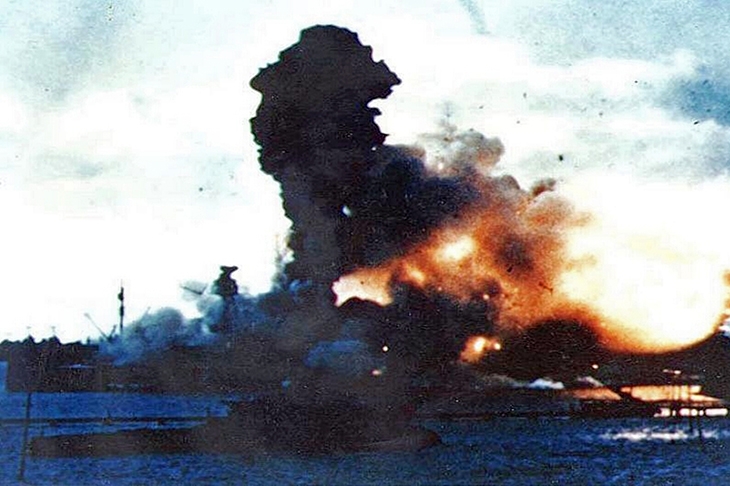It is sometimes said that intelligence failures are often failures of assessment rather than collection. This is especially so when the intelligence is unwelcome or unfashionable. MI6’s first report of prewar Germany’s secret U-boat building programme was withdrawn from circulation at the request of the Foreign Office, reluctant to alarm Whitehall’s appeasers.
Action Likely in Pacific exemplifies that tendency in spades. Here we have explicit, documented warnings of the Japanese attack on Pearl Harbor which brought the Americans into the second world war, of the construction of Japanese super-submarines, of the Japanese attack on Nationalist Chinese and American forces, of the subsequent Sino-Soviet coalition, of the Soviet atomic bomb programme and of the Korean war, the latter some five months before Soviet tanks rumbled across the 38th Parallel. All from one man and all ignored by the American government he strove to serve.
The man was Kilsoo Haan, a Japanese–American and a Korean patriot who campaigned tirelessly against Japan’s annexation of his country. After the Japanese were removed he campaigned with equal vigour against the threat of Soviet communism. The book’s subtitle — Secret Agent Kilsoo Haan, Pearl Harbor and the Creation of North Korea — is misleading because Haan was not a secret agent so much as a publicist and activist on behalf of resistance groups such as the Korean National Front Federation and the Sino-Korean People’s League. True, he communicated intelligence and information obtained by agents working secretly for these organisations, but although some of it remained secret much was surfaced through his press contacts in order to maintain political pressure.
Some of the blame for the fiasco must lie with Roosevelt, more concerned with the election than the Pacific fleet
Many of his warnings were ignored through what John Koster rightly describes as ‘bungling, sheer stupidity or something more devious’, but on the whole he succeeded brilliantly. His efforts were still not widely acknowledged when he died in 1976, since when a number of books have paid tribute to him, and in 2004 a Korean feature film dramatised him as a James Bond figure. He was never that, but Koster’s account gives him the historical credit he deserves and, equally importantly, renders the historical context within which he worked.
Many western readers will be unfamiliar with the latter, which is presumably why Koster devotes several early chapters to the 19th- and 20th-century evolutions of the two Hermit Kingdoms — Japan and Korea — into the modern powerhouses we know today. These form a useful corrective to the natural Eurocentricity of our views of the 20th century’s wars. The sheer scale of suffering and brutality is persuasive evidence that that century was perhaps the most violent ever.
But the heart of the book is the Pearl Harbor fiasco in which 2,400 US servicemen were killed. It was a fiasco not because of the reactions of those who endured the surprise air and midget submarine attacks but because it was preceded by no fewer than eight warnings from Haan alone — and no one did anything. For five months he had told US government officials and senators that the Japanese were planning to attack Pearl Harbor, citing good evidence.
Two days before the attack he informed the State Department that the Japanese embassy was selling off its cars at knock-down prices because, as they told the dealer, they were ‘going to Japan pretty soon’. The day after the attack the State Department shamelessly threatened Haan that if he released his warnings to the press he would be ‘put away for the duration’. This despite the fact that the press had already predicted an attack. US codebreakers had also given explicit warning the day before but no one passed it on. Some of the blame must lie with Roosevelt himself, more concerned with the forthcoming election than the Pacific fleet.
Arguably, Haan’s most significant and untrumpeted achievement was his securing the freedom of Korean-Americans. Following Pearl Harbor, the US introduced wholesale internment of 112,000 Japanese–Americans in appalling conditions, despite the evident loyalty of the overwhelming majority. Koreans were legally Japanese, since the US recognised (and had encouraged) Japan’s 1910 annexation of Korea, but Kilsoo Haan persuaded the Justice Department to exempt them.
There was much more bungling and stupidity; but the ‘something more devious’ identified by Koster refers to communist infiltration of the US administration, either as Soviet spies (he quotes an estimated 360 in the federal government) or as sympathisers often appointed by the spies. Koster mentions some of the better-known — Alger Hiss, Harry Dexter White, the Rosenbergs — and takes pains to show how they sought to shape US war and foreign policy to favour the Soviet Union.
This is a good and educative account of a worthwhile subject. It begs for a copy editor — there are many typos and repetitions — but more importantly it begs to be read by anyone interested in how much of a world war that war really was.






Comments